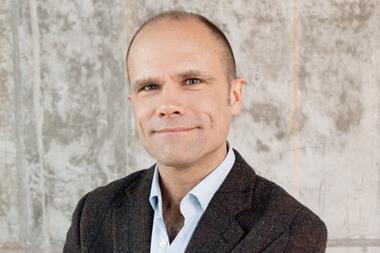American law has seen a new development in the last three years that is a remarkable step for the plaintiff bar. It results from a coalition of government action and social change that recognises new legal theories and permits recovery by governments as plaintiffs. The driving force for this legal change is an entrepreneurial spirit among plaintiff lawyers that has made a small number of them among the wealthiest people in the world. It has already had a profound effect on the industries targeted by the litigation and could have a devastating impact on these industries' insurers.
Mass tort
In 1996, the attorney general in Mississippi, followed by other states, contracted with prominent plaintiff attorneys to sue the tobacco industry. This is the latest and probably the most spectacular example of American legal trends in the last 20 years and a precursor to similar litigation. The so-called "mass tort" is a phenomenon which brings together thousands of potential plaintiffs and solvent or well-insured industries in one class-action lawsuit. Starting with a suit over the use of the Vietnam-era defoliant Agent Orange, plaintiff lawyers in America honed their techniques on products as diverse as asbestos, the Dalkon Shield (an intrauterine contraceptive) and silicone breast implants.
The federal government was helpful to plaintiffs in some of these cases by issuing warnings or mandating a recall of the products. Plaintiffs used the governmental action as evidence of a defect in the product and fault on the part of the manufacturer. Neither the federal government nor the states were parties to the lawsuits, however.
Government-sponsoredThe states' lawsuits against the tobacco industry changed that. The American people expected the government to finally take action and protect the interests of the public. In their view, politicians had obviously failed to regulate the industries which were knowingly harming the consumer. The states' attorneys general accepted that responsibility and decided to team up with plaintiff lawyers.
The lawsuits sought reimbursement for Medicaid insurance funds paid out for smoking-related illnesses. Individual lawsuits brought by smokers against tobacco companies had been a spectacular failure for 20 years. Not only did the suits filed by the attorneys general represent a dramatic change in legal theory but the amount of money involved was also larger than in any previous class action lawsuit.
In 1998, the tobacco industry settled with all 50 states for $240bn, to be paid out over 25 years. Plaintiff lawyers are expected to rake in $12bn in fees. Most of this will be split among a few dozen law firms that were handpicked by the states' attorneys general.
Why have states been successful when the injured parties, smokers, have not? The answer probably lies in a combination of politics and timing that made it financially impossible for the tobacco companies not to settle. None of the states' cases actually went to trial. However, the trial judges had also refused to dismiss the suits. One judge in Minnesota had permitted discovery of tobacco industry documents that showed the industry had known of the dangers of smoking and the addictive qualities of nicotine for many years but had suppressed its research findings. The tobacco industry raised the white flag rather than risk ruinous verdicts in dozens of jurisdictions.
Lawsuits against handgun manufacturers
On the heels of the tobacco settlement, plaintiff lawyers used their annual convention in 1998 to announce that their new clients, cities, had hired them to pursue damages caused by handguns. New Orleans and Chicago had both contracted with plaintiff lawyers with tobacco litigation experience to sue handgun manufacturers for the costs to police, ambulance services, and municipal hospitals related to handgun injuries. Both cities chose different theories of fault. New Orleans was claiming handguns were defective products, while Chicago asserted they were a legal nuisance subject to fine and abatement.
More than 15 American cities have subsequently announced similar lawsuits, hiring plaintiff lawyers on a contingency fee basis to bring them. No settlement in any of these suits has been announced. In Cincinnati, the trial judge has dismissed the lawsuit. In his opinion he ruled that the city was not a proper party to the lawsuit in that it could not claim any direct damage from handguns.
The handgun industry is much smaller than tobacco and settlements of any magnitude may bankrupt many manufacturers. One of them, Colt, has already announced that it intends to withdraw from the market rather than face the costs of defending its handgun products.
Other industries to be sued
Which industries will be next? The state of Maryland recently filed suit against lead paint manufacturers to clean up one million toxic homes. The liability could be up to $20bn.
The common factors in mass tort class actions have been a low public perception of a product or industry combined with that industry having sufficient assets to make the suits worthwhile for plaintiff lawyers. The new twist is the addition of government entities as plaintiffs or willing assistants. The US government's antitrust suit against Microsoft was led, unsurprisingly, by a veteran of the tobacco litigation. While the antitrust suit in itself will not spawn billion dollar fees, the derivative lawsuits by companies allegedly hurt by Microsoft may well do so.
It was not surprising when plaintiff lawyers announced at their 1999 convention that they would be pursuing litigation against health maintenance organisations (HMOs). Both states and the federal government have been trying to regulate HMOs more closely. The recently announced lawsuits, led by Richard Scruggs, a Mississippi lawyer and the nominal head of the tobacco suits, seek to force HMOs to provide services the HMOs consider too expensive, experimental, or unproven. They also seek damages for patients who were refused certain medical treatments. Meanwhile, legislators seeking socialisation of American healthcare look on approvingly.
Outlook
The trend in government-sponsored or government-aided litigation is unlikely to slow down. The tobacco suit legal fees are just now being distributed and plaintiff lawyers have learned that the best investment for them is groundbreaking lawsuits against wealthy industries.
The issue for insurers will be whether the targeted industries may claim indemnification based on their liability policies. The tobacco lawsuits have until recently left insurers untouched as tobacco companies have not sought indemnification and many of their policies have specific exclusions for tobacco-related health claims. In February, the smallest of American tobacco companies did file suit seeking indemnity from its liability insurers. Tobacco's position is unusual, as most mass tort claims in the US have involved large payments by insurers. Historically, important industries might have looked to the federal government for legislation to limit their liability. At a time when the government is the plaintiff, such relief is not likely to be forthcoming.
--
Christopher C Iliff is an assistant vice president in the reinsurance claims department at Employers Reinsurance Corporation, E-mail: christopher.iliff@ercgroup.com

















